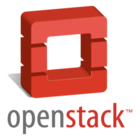I wanted to find a way to properly view resources (memory/CPU/IO) usages or configuration. For that I need to use cgroups. But the problem are on free, top, htop or common any tools, as they do not get the real informations of the container.
We’re in fact waiting on a lot of work on the kernel side or systemd side. More information’s can be found here. Another solution that permit to bind a socks inside containers exists called CGManager, however classical tools doesn’t use it to get informations.



